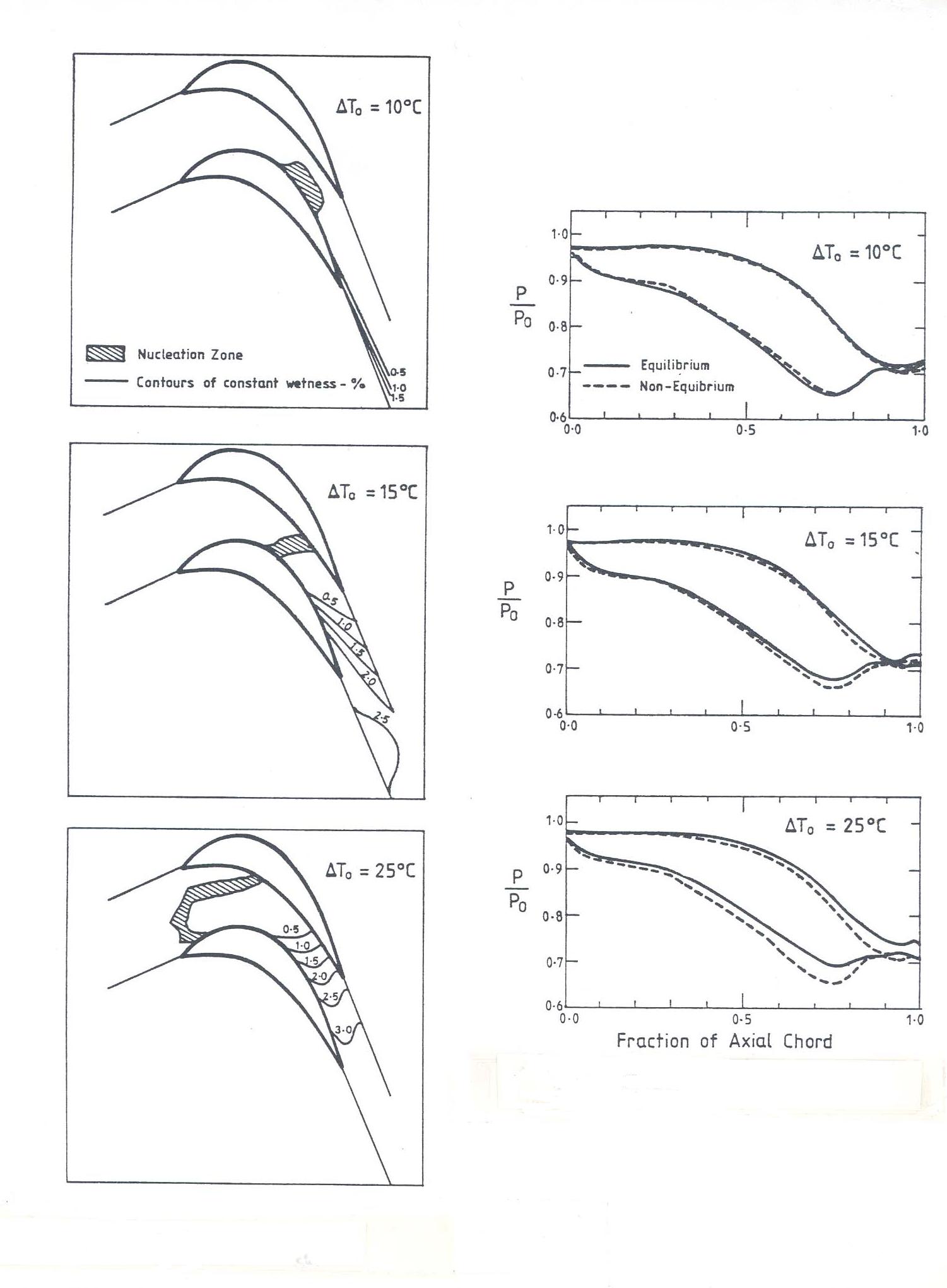
Axial Flow Steam Turbine Research
Performance and efficiency of today's generation of axial turbines can be improved by a better understanding of flow mechanism within the blade rows and leading/trailing edges. CFD programs can present powerful tools to achieve such a task and to facilitate new designs and improvements.
The research work conducted by Dr. Meron Lavy (Mehran Moheban) since 1980 are briefly described below. The majority of the research work were undertaken at the Whittle Laboratory Cambridge University under the supervision of Prof. J.B. Young, and consultation with Prof. J.D. Denton for the computer code development. Since then Dr. Lavy has developed a number of transonic flow simulation programs and designed a number of flow testing and measurement facilities.
Numerical Analyses
For the Blade-to-blade flow analyses, the CFD programs developed (code named TM2DST) employs the hyperbolic inviscid Eulerian flow equations for flows in turbine cascades. The methodology is based on the well known Denton finite volume technique and solves for continuity , momentum and energy equations. The program implements the non-equilibrium nucleating steam equations and can calculate various steam parameters at different stages of multistage turbine and along different spanwise sections. Wake propagation resulting from stator-rotor blade interaction or flow separation in the upstream blade rows are simulated by imposing periodic or sudden variation in fluid properties at blade inlet plane. An example of the calculation for a blade-to-blade frame is shown below.
The CFD code in one-dimensional form (code named TM1DST) has further been developed to simulate unsteady flows arising from supercritical heat addition in steam and also the steady version is capable of retaining more than one droplet group in situations where secondary nucleation can occur.
For throughflow calculations, a streamline curvature technique (code named NEST) is adopted to simulate flows of non-equilibrium steam in large steam turbomachines. The program can cope with high- and low- pressure stages where nucleating steam can occur in the final stages. This CFD routine is based on the Denton's technique solving for the inviscid flow in meridional frame. It couples various wet steam routines including the droplet growth and nucleation and can deal with sub- and super- sonic flows in turbines. Some of the merits of the computer code are:
It can calculate wet steam flows in multistage turbines for any Mach number and exhaust pressure,
Coupling of aerodynamic and thermodynamic loss routines and bleed/leakage flow for more realistic flow modelling,
Calculation of primary and secondary nucleating flows which typically occur in low pressure rotor or nozzle blade rows.
Experimental Research
For the validation of the theoretical analyses, various testing facilities
were developed and built. A one dimensional converging-diverging nozzle
and a two dimensional duct were designed. They both served for the purpose
of generating empirical data in transonic flow regime and to make them
available for comparisons with the calculations. Various steam parameters
including the droplet size using light scattering and pressure were measured
in the nozzles.
For information on other CFD and experimental projects for radial and axial turbomachines see research.
For a copy of the PhD thesis contact the Cambridge University
Engineering Library
(search under the heading catalogue) or the Whittle Laboratory. For
related topics see references
or contact or info(at)technoenterprises.com

Besides CFD flow analyses which is
his prime area of research and interest he is a Director of Sanicle Ltd. It is important to note that in the fast pace and intolerant society that
we presently live, due to misconception
and sometimes self-interest and for convenience people disregard the merits of
the disabled whatever its nature may be. But, evidently,
given the opportunity and the right environment to harness their skills and knowledge
without prejudice, the disabled can perform the tasks with the same dedication,
diligence and accuracy as the non-disabled if not even better. The employers are, for example, seeing the benefits of hiring gradutaes with autism because they have a unique talent for information technology, attention for detail and seeing patterns. Infact more and more employees are recognising the benifits of having a diverse workforce. There should be no discrimination in an educational establishment, with no double standards.The Disability and Equality Acts (for example in the UK see : UK Equality Act 2010 and the Disability Resource Centre)
have made progress in removing the physical barriers but we still have some way to go in removing
the more difficult and damaging attitudinal barriers. The aim
of the Company is to develop and produce various innovative patented electro-mechanical
devices to enhance the quality of every day life with particular emphasis
on environmental issues. The projects pursued so far range from a miniature
intraoral prosthesis to assist the laryngectomee patients with comprehensible
speech; a flexible multi-moduled ramp for wheelchair users; to a unique
sanitary door handle that minimizes cross-contamination in high traffic
public areas - a breeding ground for bacterial and contagious diseases.
Most of these design are patent
pending.
© Techno Enterprises 2005